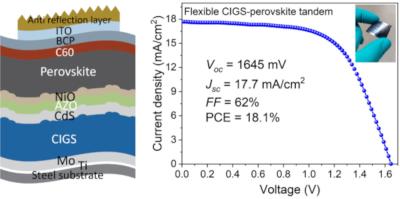Researchers at CAS (Chinese Academy of Sciences) and Henan University have developed a nanomaterial-regulated doping strategy to pre-oxidize spiro-OMeTAD into radicals in the precursor solution with tin sulfoxide (SnSO) nanomaterials prepared at high temperature. The team increased the photoelectric conversion efficiency (PCE) of perovskite solar cells (PSCs) to 24.5% using the inorganic SnSO as a dopant to oxidize and regulate the organic hole transport layer 2,2′,7,7′-tetrakis[N,N-di(4-methoxyphenyl)amino]-9,9-spirobifluorene (spiro-OMeTAD).
Spiro-OMeTAD is an important hole transport layer (HTL) material. To enhance the charge transport capability of spiro-OMeTAD, lithium trifluoromethanesulfonyl imide (Li-TFSI) is required to mediate the reaction between oxygen and spiro-OMeTAD. However, this traditional doping method has low doping efficiency, and excessive Li-TFSI will remain in the spiro-OMeTAD film, leading to a decrease in the compactness and long-term conductivity of the film. The duration of the oxidation reaction usually takes 10 to 24 hours to reach the desired conductivity and work function. In this study, the researchers developed a fast and reproducible strategy to control the oxidation of the nanomaterial. They used SnSO nanomaterial to pre-oxidize spiro-OMeTAD to spiro-OMeTAD+TFSI- free radicals in precursor solutions. This improved the conductivity, optimized the energy level position of HTL, and achieved a high PCE of 24.5%.




